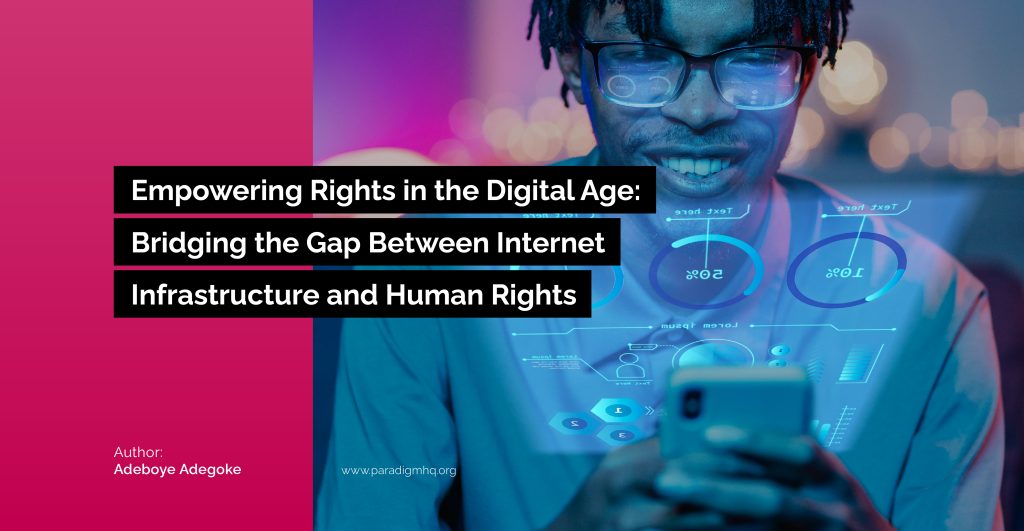In today’s digital era, the Internet stands as an indispensable tool for communication, information sharing, and social interaction, significantly shaping our world. Nevertheless, the Internet is a double-edged sword, serving as both a force for good and a potential catalyst for harm. This duality has led to a lack of consensus on the best approach to governing the Internet effectively.
As we grapple with the challenge of finding a suitable governance model for the Internet, a host of policies and actions have emerged that violate the fundamental human rights of citizens. In response, human rights advocates are pushing back against these infringements, advocating for a governance model that respects these rights. This advocacy has primarily centered around the role of state actors in Internet governance and, in some instances, the actions of private tech giants that provide various online services.
The technical decisions governing the design, development, and deployment of Internet technologies fundamentally influence how effectively individuals can exercise their human rights online. The ability of citizens to utilise the Internet for accessing information and expressing their thoughts and opinions, as well as their fundamental right to privacy, are significantly shaped by the technical regulations and infrastructure of the Internet. This raises a vital question about the intersection of human rights and Internet infrastructure, or Internet governance as a whole.
Edward Snowden’s revelations served as a wake-up call, highlighting the potential for severe human rights violations facilitated by digital technology. For instance, the warrantless telephone dragnet that covertly collects millions of telephone records exemplifies the extent of violations possible at a highly technical level that often escapes scrutiny.
While human rights have been a prominent topic in the global discourse on Internet governance, the intricate relationship between human rights and the technical aspects of the Internet has received insufficient attention from digital rights stakeholders and civil society actors in recent years. Effective strategies aimed at ensuring a free, open, and rights-respecting cyberspace must take this crucial nexus into account.
Understanding the core principles of human rights in the digital age and exploring the role of Internet infrastructure in either promoting or violating these rights is pivotal to achieving digital rights objectives. Key issues at the heart of this discussion include the universality and indivisibility of human rights, privacy and data protection, cybersecurity’s implications for human rights, Internet architecture and design, censorship, surveillance technologies, access and the digital divide, Internet shutdowns, and their impact on human rights.
To undertake this task successfully, those of us dedicated to promoting and defending digital rights must invest time and resources to enhance our understanding of Internet infrastructure. This understanding can help bridge the gap with relevant organisations like regional internet registries e.g. African Network Information Centre (AfriNIC), Asia Pacific Network Information Centre (APNIC). Standard-setting bodies like the Internet Engineering Task Force (IETF), Internet Corporation for Assigned Names and Numbers (ICANN), and Internet Service Providers (ISPs). Moreover, it can advance our overarching goal of preserving human rights in an age marked by intrusive and pervasive technologies.
A deepened comprehension of the relationship between human rights and Internet infrastructure, coupled with the identification of concrete steps and strategies to protect and promote human rights within this context, constitutes a significant initial step toward empowering human rights in cyberspace.
Leveraging existing efforts can significantly facilitate these endeavors. The United Nations Guiding Principles on Business and Human Rights, which emphasise protection, respect, and remedy, offer valuable guidance to prevent human rights abuses within corporations and provide remedies in cases of abuses. These principles can guide our engagement with relevant corporations in the infrastructure ecosystem.
Additionally, we must:
- Identify best practices and strategies for safeguarding human rights in internet governance and development.
- Advocate for inclusivity and diversity within Internet Infrastructure and Internet Standard Setting Organisations, such as ICANN and IETF.
- Develop expertise at the intersection of human rights and Internet Infrastructure.
- Study successful initiatives aimed at promoting human rights in internet infrastructure.
- Promote dialogue and collaboration among stakeholders in the technology, human rights, and policy fields.
- Raise awareness about how internet infrastructure can either enable or hinder the realization of human rights.
- Encourage discussions on policies, technologies, and practices that can protect and promote human rights in the digital age.
The top priority is to ensure that the technical decisions made by Internet Standard Developing Organizations (SDOs) that govern the technical infrastructure of the Internet do not enable human rights violations. On the contrary, they should uphold the protection of human rights.
As we navigate this critical topic, it’s crucial for all stakeholders to recognise their moral duty to protect human rights. This duty must be reflected in the standards, technical setups, and processes governing the Internet, with a system of accountability in place to verify compliance.
In pursuit of these objectives, Paradigm Initiative is committed to working with other stakeholders to:
- Incorporate human rights principles into the design, development, deployment, and maintenance of Internet infrastructure.
- Promote diversity and representation of civil society voices in Internet governance policy development.
- Facilitate the implementation of rights-respecting technical standards and policies at the global, regional and national levels.
- Demonstrate the impact of Internet infrastructure decisions on the human rights of individuals and communities.
In conclusion, the endeavor to empower human rights in the digital age requires a concerted effort from all stakeholders to bridge the gap between Internet infrastructure and human rights. By doing so, we can foster a cyberspace that respects and upholds the fundamental rights of all individuals.
By Adeboye Adegoke, Senior Manager, Grants and Programs Strategy

 (1)
(1)